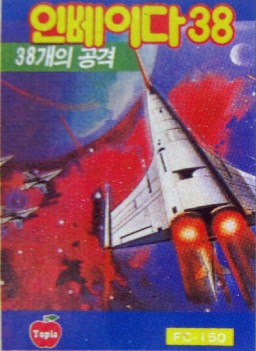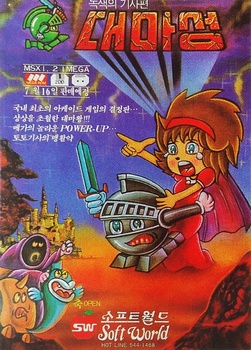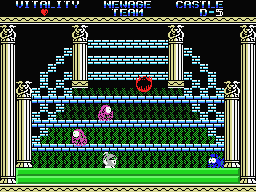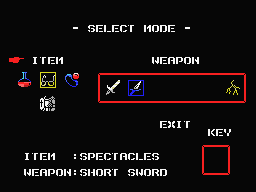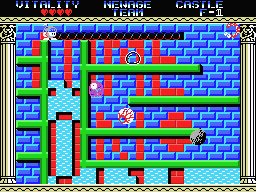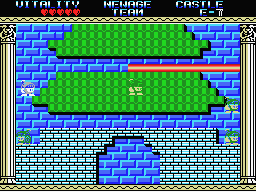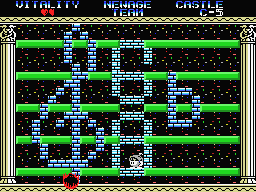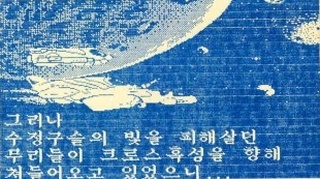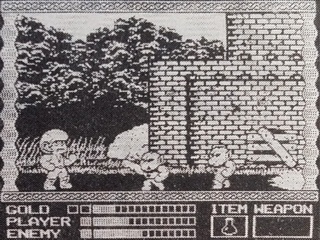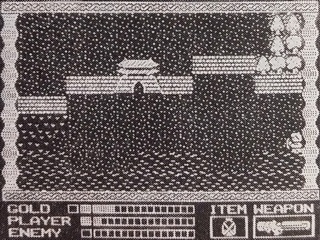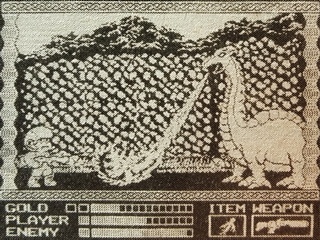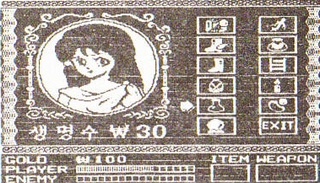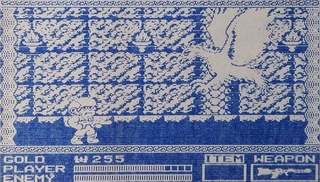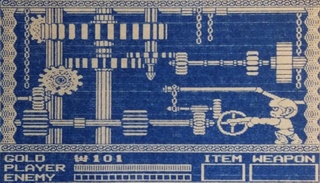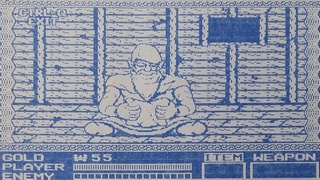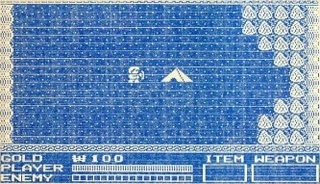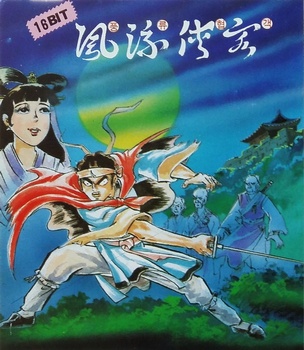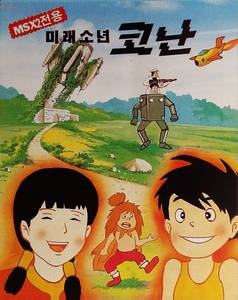A History of Korean Gaming
토피아 Topia

|
Founded: |
July 1983 |
|
Status: |
defunct |
|
Key People: |
沈在鉉 심재현 Sim Jaehyeon: |
|
Website: |
none |
With over 20 branches, Topia was the largest chain of computer stores in Korea by 1987.1 When it turned a software publisher following the application of the computer software protection act, Topia was notably the only game software company during the eighties that took intellectual property rights quite seriously and didn't produce any unlicensed grey market ports of foreign games. While Topia was among the first companies to also publish games for the 16-bit IBM PC, it stopped producing games with the beginning of the slow demise of the 8-bit generation.
Later they formed the chain "PC Line" with over 150 branches throughout the country at its peak. They also published a magazine called Computer Sijang (Computer Market) from 1992, which was discontinued in 1996, so that's likely around the time they went under.
Games
Competition Compilations - MSX (1986)
Topia's first known published Korean-made games were a series of compilations containing the winners' entries from a coding competition. There have been at least two volumes with three titles each. Not much is known about the first volume, but it contained programs named "Ponpoko" (obviously an adaption of the arcade game), "Seongtanjeol Daehaengjin" ("Big Christmas Parade") and "Bio Rhythm". The grand prize winner for volume 2 was Jang Changsu with the 3D racing game "Dream Runaway" ("Kkumsog-eui Talchul"), the other two runner-ups are titled "Cunning" (by An Jongseon) and "Missile Simulator" (by Park Taehyeon).
Invader 38 & Fruits Pack - FC-150 (1986)
This is pair of games for Goldstar's FC-150, a system otherwise mostly neglected for games other than the compatible Sord m5 software. These are very likely ported from other Japanese PCs. Unfortunately, only their covers are known (although Fruits Pack may be PonyCa's Fruit Panic).
대마성 (Daemaseong) / Legendly Knight - MSX (July 16, 1988)
Advertisement Art
Legendly Knight was the first product of three big names in the Korean gaming history: Lee Sangyoun and Lee Kyuhwan should later form the software house Phantagram, which is very well known internationally for the Kingdom Under Fire series. Lee Sanghun (who was only 15 at the time Legendly Knight was released!) was responsible for many more console games in the first half of the 90s, and was even contracted by Sega to program the Game Gear version of GP Rider2.
For the first time a Korean developed game couldn't be routed back to a single dominant inspiration, but elements of various action platformers, like Bubble Bobble and Knightmare II are combined into a unique mixture. The player leads a well-rounded (literally) knight through the many single-screen stages of a castle, to rescue the princess, who is featured on the cover but never seen on screen. In the beginning, he is only armed with a small sword, but in the halls of the castle are hidden better weapons, like a throwing lance and several magic spells. Like all other items, those are invisible at first and only reveal their position when a certain spot on the map is hit by a weapon. Until the knight wields ranged weapons, finding those spots can get quite aggravating. If players don't find the key to the boss' chambers among the nine rooms of every stage, they're sent back to the beginning of the current wing of the castle. Good for those who own a pair of spectacles and knows which room the key is to be found, as they reveal it instantly. Other items help the knight to survive multiple passes through the dungeon: A potion restores life points, a ring grants invincibility for a short time. Finally, there's an armor and a scuba suit, whose use doesn't really need any explanation.
The game starts out pretty fun, but later levels grow only more annoying instead of more challenging. Enemies take forever to kill, items can hardly even found anymore without the rare spectacles, and some of the bosses are downright unfair. At least the current status can be preserved through one of the weirdest password systems ever: Passwords aren't entered in a simple line, but a strange diamond shape.
From a technical standpoint, Legendly Knight is pretty solid, although the flickering can get extremely heavy when too many sprites end up on the same scanline. Overall, the game shows a lot of potential, but also a big weakness that should haunt a high percentage of Korean games for many years to come: Balancing.
혹성大탈출 (Hokseong Daetalchul) - APPLE ][ (1989)
Cover
The title roughly translates to "Great Planet Escape". The player takes the role of Duke, the prince of a planet called Cross that is conquered by the army of the Galaxy Breakers. Duke escapes from his underground prison to search for the planet holding the Mystery Sword. However, his ship is shot down by the Galaxy Breakers, and he not only has to retrieve the sword, but also find a way to escape the planet.
Hokseong Daetalchul (Apple II)
Similar to Zelda II, the game is divided into an outer world displayed from a top-down view and sidescrolling dungeons. The stages seem to be much more linear, though. Information about gameplay details is very limited, as the game hasn't been preserved by now. However, there is a scan of the manual, showing and describing several items, weapons and enemies.
風流俠客 (풍류협객 / Pungnyu Hyeopgaek) - IBM PC (March 1989)
Advertisement
Topia's own development team stuck with their formula to create more Action-RPGs, with Pungnyu Hyeopgaek also one of the very first published games for IBM-compatibles. All else that is known about the game at this time is that it was set in ancient China. There exist no known color screenshots, but it appears most likely that it ran in monochrome, anyway.
미래소년 코난 (Mirae Sonyeon Conan) / Future Boy Conan - MSX2 (December 1989)
Advertisement Art
For their last Action-RPG before they withdrawed from the game business, Topia returned to the MSX, this time creating one of the country's few MSX2 games. Future Boy Conan is based on the Japanese animated series with the same title, but its licensing status is rather doubtful. Just as Pungnyu Hyeopgaek, advertisements and short magazine reviews are all that is passed down about the game.
References
1. Computer Hakseup 10/1987, S. 39
2. This Is Game: Interview with Lee Sanghun



